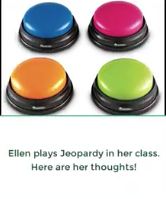
In this section we are providing you with some resources that can help you on your journey as an educator at Rush University. If you have a recommendation for a resource, please contact CTEI@rush.edu.
CTEI is a GREAT Resource!
Ever wonder what people learn who visit CTEI for a consultation? Don't take our word for it, let other faculty tell you what they learn how to do and how it affects their teaching! Click the images to hear testimonials!

Active Learning CTEI Workshop Resources
The resources below are session recordings and slide presentations from our Active Learning Bootcamp and the sessions offered during the summer of 2019. If you would like assistance or recommendations for teaching in the Rush Collaborative Learning Hub (CLUB) classrooms, please reach out to one of our Instructional Designers at CTEI@rush.edu.
